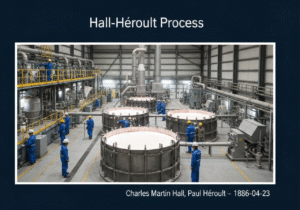A systematic method for waste minimization within a manufacturing system without sacrificing productivity.
- Methodologies: Customers & Marketing, Ideation, Product Design
Lean Manufacturing

Lean Manufacturing
- Continuous Improvement, Just-in-Time (JIT), Lean Manufacturing, Process Improvement, Production Efficiency, Quality Management, Toyota Production System (TPS), Value Stream Mapping, Waste Reduction
Objective:
How it’s used:
- A production philosophy that focuses on eliminating waste and maximizing value for the customer. It is based on a set of principles, such as continuous improvement, just-in-time production, and respect for people.
Pros
- Reduces costs and improves efficiency; Improves quality and customer satisfaction.
Cons
- Can be difficult to implement and sustain; Requires a significant cultural change.
Categories:
- Lean Sigma, Manufacturing
Best for:
- Improving the efficiency and effectiveness of a manufacturing system by eliminating waste.
Lean Manufacturing finds broad application across various sectors, particularly in automotive, aerospace, consumer goods, electronics, and healthcare, where efficiency is paramount. In the automotive industry, for example, Toyota pioneered this methodology, which has been adopted globally to enhance productivity while simultaneously reducing costs. The approach is particularly effective during the design and development phases of a product, encouraging cross-functional teams to collaborate in identifying and eliminating non-value-added activities early in the process. Participants in this methodology typically include engineers, designers, production staff, and management, creating a culture of continuous improvement where every member is empowered to suggest enhancements. The Just-In-Time (JIT) production component of Lean Manufacturing minimizes inventory levels, ensuring that materials arrive precisely when needed, thus reducing carrying costs and increasing response times. Techniques such as Value Stream Mapping are utilized to visualize processes and identify waste, making it easier for teams to understand where improvements can be made. Organizations implementing Lean often observe significant gains in quality and customer satisfaction, as the focus on value ensures that products meet or exceed customer expectations, while decreased waste leads to more sustainable practices and optimization of resource use. By prioritizing respect for individuals, Lean also cultivates a work environment conducive to innovation, with employees encouraged to take ownership and responsibility for their contributions.
Key steps of this methodology
- Identify value from the customer's perspective.
- Map the value stream to visualize and analyze the flow of materials and information.
- Eliminate non-value-added activities to reduce waste.
- Create flow by ensuring smooth transitions and minimal interruptions in the production process.
- Establish pull by producing only what is needed, when it is needed.
- Pursue perfection through continuous improvement and iterative problem-solving.
- Implement standardized work to maintain best practices and improve efficiency.
- Encourage employee involvement and empowerment to utilize their insights for improvements.
Pro Tips
- Implement value stream mapping to identify non-value-added activities and visualize workflow inefficiencies, allowing for targeted interventions.
- Adopt a structured problem-solving approach, like the A3 methodology, to facilitate root cause analysis and promote a culture of continuous improvement.
- Engage cross-functional teams in daily stand-up meetings to enhance communication and immediate issue-resolution, reducing delays and improving responsiveness.
To read and compare several methodologies, we recommend the
> Extensive Methodologies Repository <
together with the 400+ other methodologies.
Your comments on this methodology or additional info are welcome on the comment section below ↓ , so as any engineering-related ideas or links.
Historical Context
1890
1924
1930
1940
1950
1950
1958
1886-04-23
1897
1930
1940
1949
1950
1950
1960
(if date is unknown or not relevant, e.g. "fluid mechanics", a rounded estimation of its notable emergence is provided)















Related Posts
Musculoskeletal Discomfort Questionnaires
Multivariate Testing (MVT)
Multiple Regression Analysis
Motion Capture Systems
MoSCoW Method
Mood’s Median Test